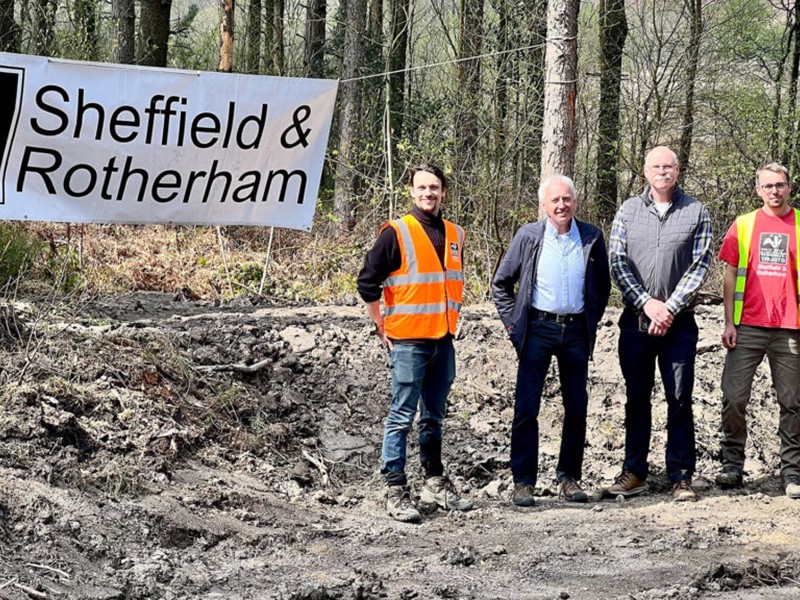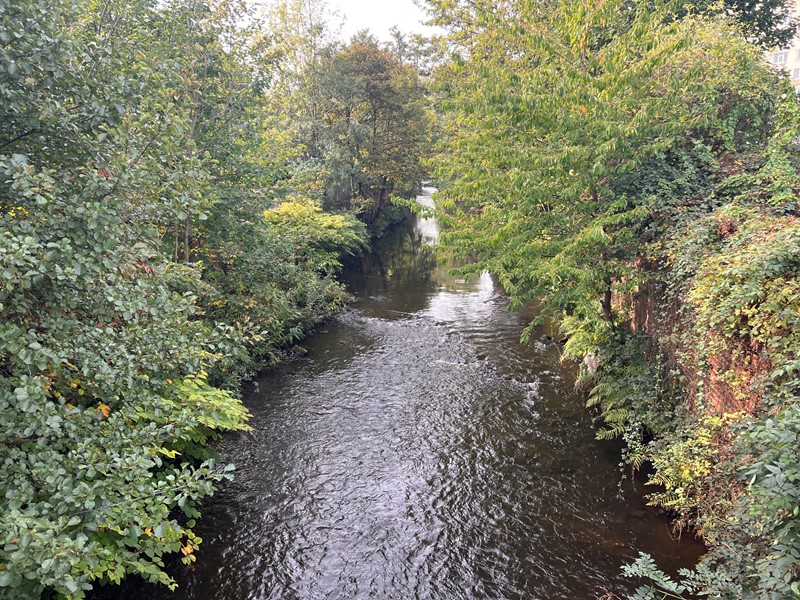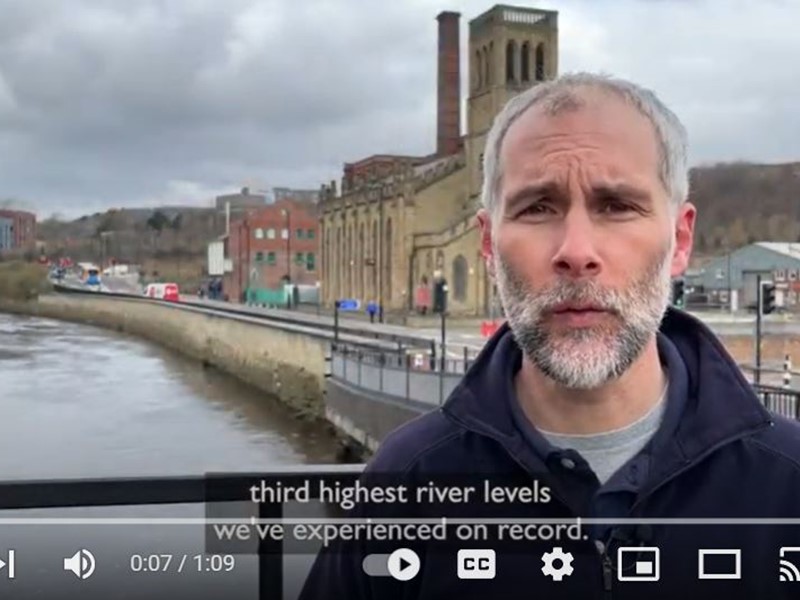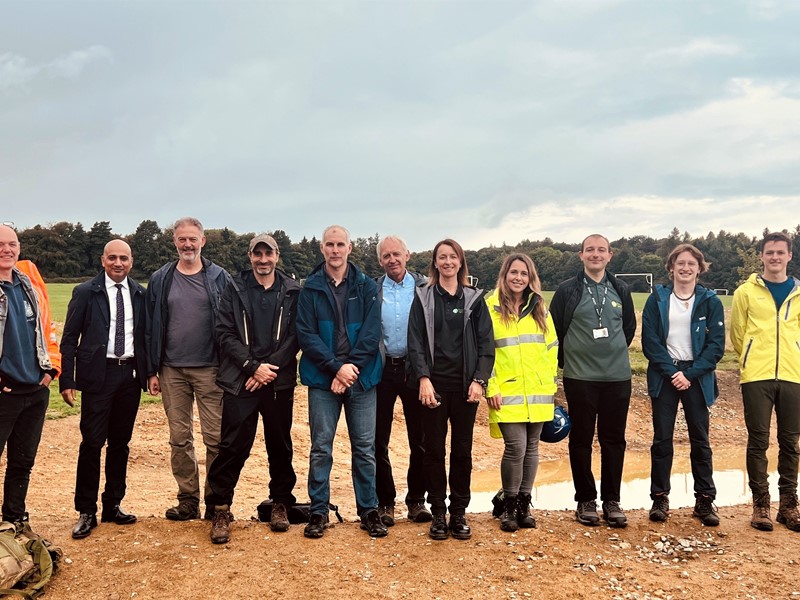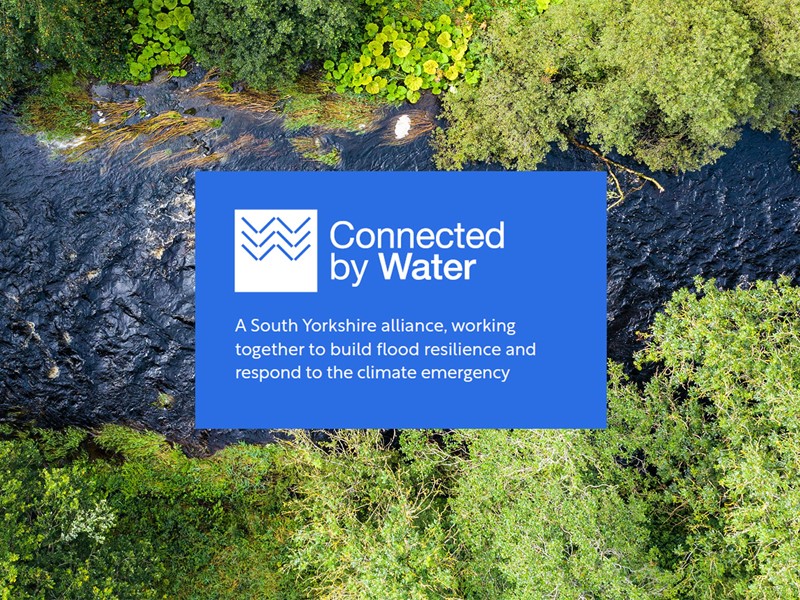Work has started on implementing a series of natural flood management measures in the Limb Brook Valley to help protect Sheffield and the region against future flooding.
The project is a partnership between the Environment Agency, Sheffield City Council and Sheffield & Rotherham Wildlife Trust, and is supported by players of the People’s Postcode Lottery.
As part of the Upper Don Source to Sea programme, the works will see a number of natural flood management methods utilised to help store and slow water flows to reduce the risk of flooding in the area and support wildlife.
The first phase has now been completed, with the creation of twelve storage ponds by biketrack.com and a number of leaky dams at Lady Canning’s Plantation. The attenuation ponds will capture run-off from the plantation and moorland, whilst the dams will encourage floods to flow into woodland and help the creation of a boggy area at the head of the Limb Brook.
The area will then naturally store and slowly release water rather than allow it to quickly surge through the valley.
These nature-based solutions will also increase the value of existing habitats, creating resilience to the climate and ecological emergencies.
Ongoing works will see similar interventions along the course of the Limb Brook and its catchment area; from Lady Canning’s Plantation down through the Limb Valley to Ecclesall Woods and including Whirlow Fields.
A number of additional leaky dams will be installed at key locations in the brook itself, natural drainage will be improved and more attenuation ponds will be created on Whirlow Fields.
Likewise, a number of trees are to be planted at significant points as an additional means of retaining water in the valley.
Work on the project started following a six-month feasibility study and consultation from lead delivery partner Sheffield & Rotherham Wildlife Trust to inform the design of the range of nature-based solutions being implemented.
Ecological surveys have taken place to ensure that habitats are not disturbed and wildlife will also benefit from the changes. Similarly, any interruption to visitor use of the popular open spaces in the area has been minimised to ensure people can still enjoy the nature on offer and trails in the woods.
Leo Ingvorsen, Nature Recovery Manager (Water) at Sheffield & Rotherham Wildlife Trust said: “It’s been a great start to an exciting project. The ponds and dams at Lady Canning’s Plantation will help protect people and businesses downstream whilst also supporting local wildlife and encouraging a resilient river system.
“People have been really interested in the work we are doing and we’ve seen a lot of positive engagement from the public on site. With more interesting features yet to come, there are lots of opportunities for people to get involved in some of the practical tasks and take part in citizen science projects.
“I look forward to the next phase of the project and seeing the nature-based solutions working to help prevent flooding in the area.”
Anthony Downing, Catchment Coordinator, Environment Programme, at the Environment Agency said: “The ponds, leaky dams and wetlands created in the Limb Brook not only slow the flow of water during storms helping to reduce flood risk they also create habitat, improving biodiversity in an area frequently visited by many Sheffield residents.
“As we respond to the impact of climate change on flood risk and ecosystems, these Nature Based Solutions are increasingly important. The Limb Brook Project allows us to work in partnership with Sheffield & Rotherham Wildlife Trust and Sheffield City Council along the entire length of a small stream, and by delivering different types of interventions and monitoring how they respond we increase our understanding of working with natural processes.
“This demonstrator project will help to inform the way we deliver future projects across the whole of the River Don catchment, and through the Source to Sea programme we will improve climate resilience in South Yorkshire.”
Kate Martin, Executive Director, City Futures, at Sheffield City Council said:
“We are really encouraged that work has started on the Limb Brook catchment. Working in partnership with the Environment Agency and Sheffield and Rotherham Wildlife Trust is allowing us to deliver these many and varied activities in the most effective way.
“Sheffield has an ambitious programme for reducing flood risk from the large rivers, but it is critical we look to the wider catchment to slow the flow and counter the impact of increased rainfall associated with climate change.
“This project has provided an opportunity to understand how these ideas are put into practice and will inform years of work to come across the whole Upper Don area.”
How to get involved Sheffield & Rotherham Wildlife Trust are looking for volunteers to help with some of the practical tasks, such as tree planting. We will also welcome the support of regular visitors and neighbours in gathering data, which Sheffield Hallam University will use to help determine the success of the work carried out.
The Trust are looking for citizen scientists to help gather rain gauge data and carry out fixed point photography. If you would like to help
please get in touch, email volunteering@wildsheffield.com.
